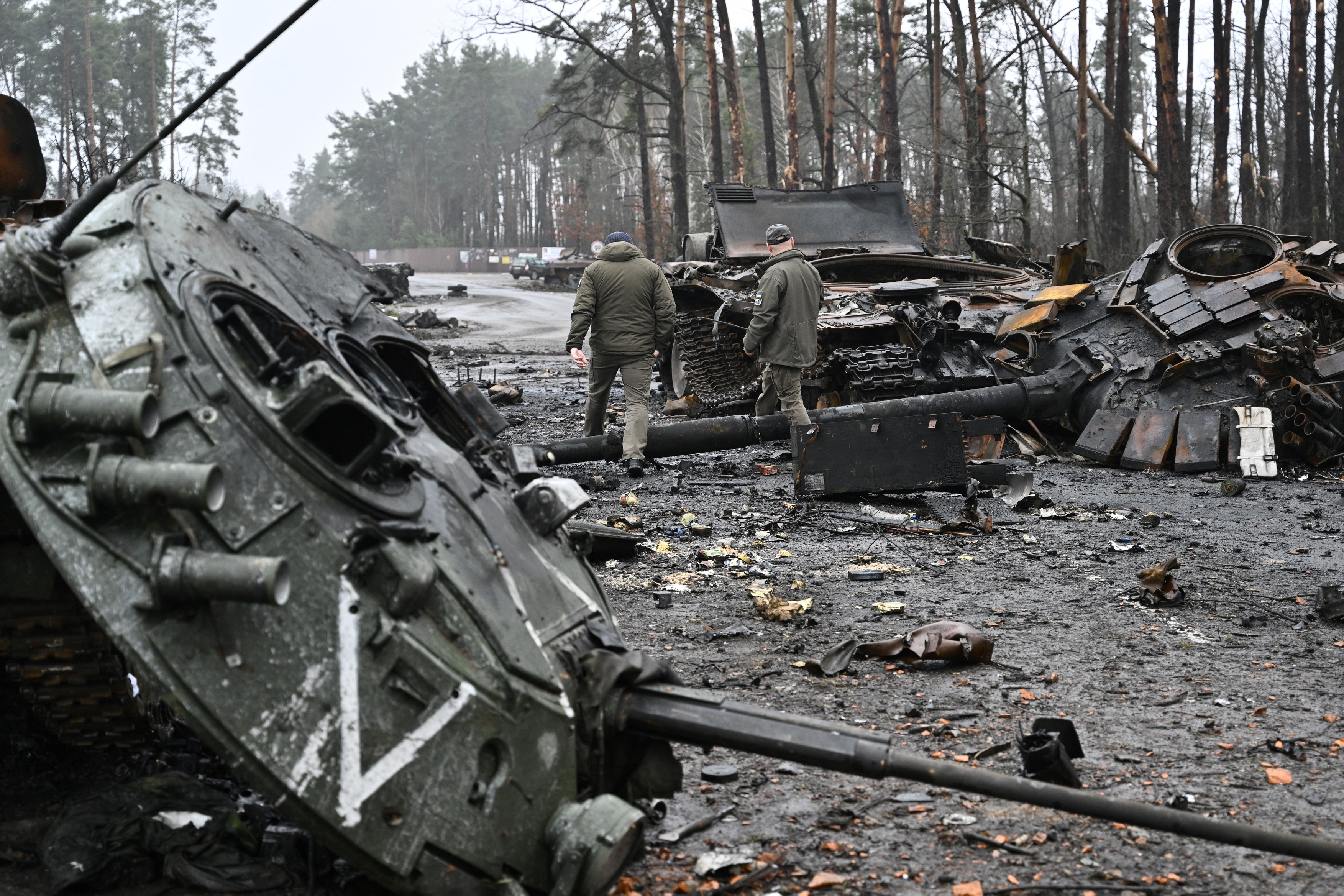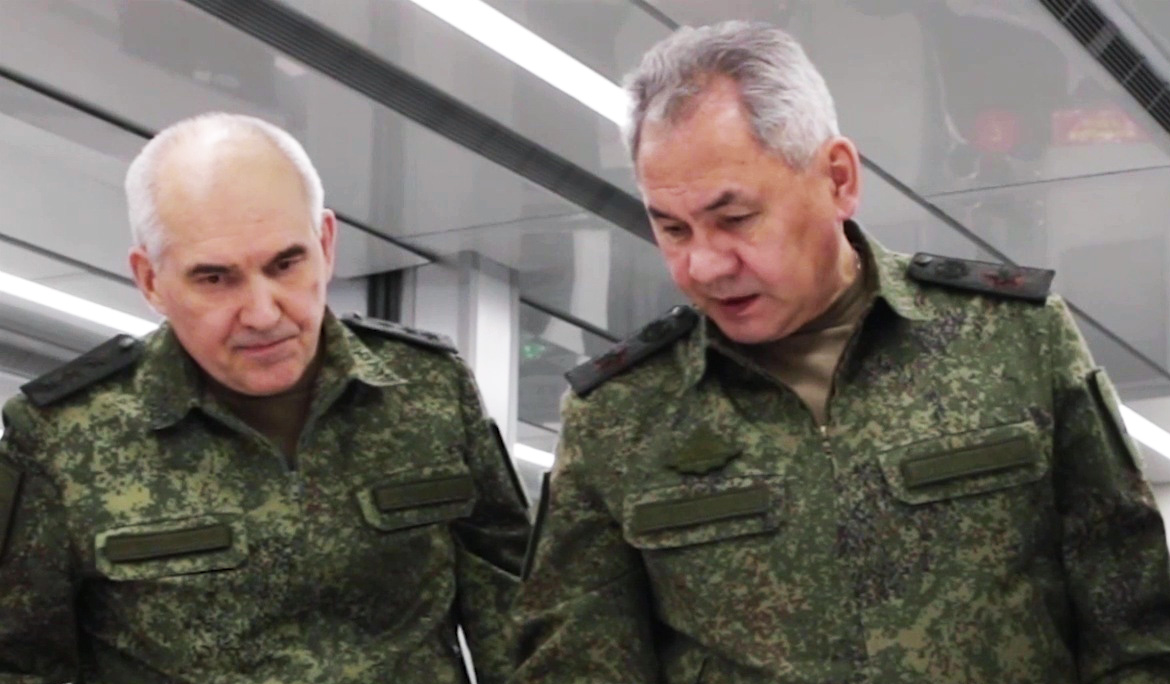
It appears that the Ukrainian military may still have significant numbers of tanks, armored personnel carriers and other military equipment, despite Russia’s overwhelming advantage in this regard prior to the start of the war.
In a video published on social networks on Wednesday, it can be seen that the Ukrainian army mobilized a huge number of tanks, armored vehicles, howitzers, self-propelled guns and other military equipment somewhere in the country, probably in preparation for mechanized offensive operations.
“Preparation for combat operations in a combined military manner (tanks, motorized infantry, self-propelled guns, snipers) and logistical support is a key component of combat training. It will make the bravery of the soldiers defending Bakhmut worthwhile,” Gen. Ben Hodges, former commander of U.S. forces in Europe, said of the footage.
But what is even more interesting is that on the video you can see Soviet-made combat vehicles that were in Ukraine before the war began. In other words, the column mobilized by the Ukrainian army, although impressive, does not include Western tanks or armored vehicles that have recently arrived in Kyiv.
However, it should be remembered that Ukraine received several T-72 tanks from Poland in the first months of the Russian invasion, and earlier this year Warsaw announced that it would transfer to Kiev 60 more repaired and modernized Soviet tanks, in addition to the Leopard. 2 combat vehicles of German production were promised.
But the fact that the Ukrainian army can still mobilize such a large number of tanks and armored vehicles after more than a year of war is impressive.
Although estimates vary depending on the source cited, all analyzes published prior to the start of the war on February 24 of last year spoke of an overwhelming superiority of the Russian armed forces over the Ukrainians in the relevant section.
For example, the London-based International Institute for Strategic Studies (IISS) estimates that Russia has a 3:1 tank advantage over Ukraine.

T-72 tank (PHOTO: RIA Novosti / Sputnik / Profimedia)
About the tanks used in the war in Ukraine
Mark Kancian, a former US Marine Corps colonel, and Jeffrey Edmonds, a Russian military expert at the Center for Naval Analyses, told Insider that the “shock effect” of armored formations remains important even on today’s battlefields.
Tanks provide mobility, firepower and protection, critical components of rapid operations such as those that led to the catastrophic collapse of the Russian front in the Kharkiv region last September.
Throughout the war, Russia relied mainly on 4 models of tanks: T-64, T-72, T-80 and T-90. The “bulk” of Russian tank formations consisted of T-72 tanks, which in the Soviet period and in subsequent years underwent numerous processes of improvement and modernization.
Although each model of tank has its own characteristics, two US military analysts point out that they are part of a common trunk, with each generation being an improved version of the previous one.
In other words, “the newer the tank, the more powerful it is,” Kancian says. But there are exceptions to the rules.
The Russians relied so heavily on the T-72 during the Cold War that countless upgrades and overhauls make it comparable or even superior to its direct successor, the T-80, which is generally considered less reliable.
As for the Ukrainian army, diversity was not its strong point, relying almost exclusively on T-64 and T-72 tanks, if you do not take into account the large number of combat vehicles captured from the Russian army.
But Kanchian and Edmonds point out that even when it comes to the same generations of tanks, the Russians outperform their equivalents inherited from Ukraine after the collapse of the USSR, because Moscow has modernized its vehicles more as part of an effort to further build a superpower. image worldwide.
The “second army of the world”, as Russian propaganda has portrayed the situation for years.

Destroyed Russian tanks (PHOTO: Genya Savilov / AFP / Profimedia Images)
And yet, where did the Russian military go wrong? A fatal mistake on the battlefield
Everything is clear on paper: Russia undoubtedly has the best tanks. But events on the battlefield tell a different story.
“The lethality of the system [de tancuri] it depends not only on the system itself,” emphasizes Edmonds, himself a former tanker driver. “It depends on the crew and how it fits on the battlefield and how it integrates with other components of the combat power,” he explains.
And it was not only difficult for Russia to demonstrate its tank superiority on the battlefield, but also to maintain its pre-war numbers.
Staggering estimates released in February by the International Institute for Strategic Studies (IISS) and Oryx, a well-known site that tracks casualties on both sides of the war in Ukraine, suggest that Russia has lost almost half of its tanks in combat – more than 1,500 – since the start of the war. .
The T-72 and T-80 tank forces appear to have suffered the most, with the IISS estimating that Russia may have lost two-thirds of them since February 24 of last year.
“This is what conventional wisdom tells us the Russians do not adhere to their own doctrine“, Kanchian states.”They did not use their tanks as part of a combined squad“, the analyst emphasizes.
He and Edwards point out that tanks are only effective on the modern battlefield when used in tandem with infantry, artillery, aviation and sniper units – a tactic known as “combined arms”.
This was the doctrine adopted by the Soviet Union from the latter part of World War II, when it went on the offensive against German forces. General military offensive operations are considered mandatory today.

Serhiy Shoigu visiting commanders at the front (PHOTO: Sputnik / Profimedia Images)
Stupid mistakes of Russian commanders
In one of the first examples of how the Russians disobeyed this imperative, they sent a column of unprotected tanks into Bucha in the first weeks of the war, walking straight into a Ukrainian ambush.
By the way, in the first weeks of the war, dozens of videos appeared on social networks in which Russian armored columns were destroyed by Ukrainian attacks with Javelin and NLAW ATGMs, Bayraktar TB 2 drones and other weapons.
Then, when the Russian military changed its strategy in the summer and fall, these images almost completely disappeared. The Russian military, and especially its commanders, seemed to have learned their lesson, as the Moscow Air Force abandoned any attempt to gain air supremacy over Ukraine.
But then, earlier in the process, Russian commanders repeated the same mistake in the battles around the city of Vugledar, where they lost more than 100 tanks and armored vehicles in just a few days.
Kansian and Edwards say that if the Russians had followed the combined arms doctrine, they would have sent an infantry unit forward to clear the area and scout possible ambush points. But such coordinated operations require significant training, which the Russian military appears to be increasingly lacking after losing professional soldiers in the first months of the war.
But the shortcomings in this section were visible even at the beginning of the “special forces operation”.
The Russians “clearly entered this war with a lower level of tactical training than we expected,” says Edmonds.
Some reports now suggest that Russia has also begun to experience a shortage of trained tank drivers, with Ukrainian forces recently saying they detained a Russian doctor who told them he was forced to drive a tank despite his medical training.
Russia’s repeated mistakes have proved extremely costly, forcing Moscow to retire obsolete tank models such as the old T-62, T-55 and T-54, some of which were produced in the 1940s.
Follow the latest events from the 400th day of the war in Ukraine LIVETEXT on HOTNEWS.RO.
Source: Hot News
James Springer is a renowned author and opinion writer, known for his bold and thought-provoking articles on a wide range of topics. He currently works as a writer at 247 news reel, where he uses his unique voice and sharp wit to offer fresh perspectives on current events. His articles are widely read and shared and has earned him a reputation as a talented and insightful writer.